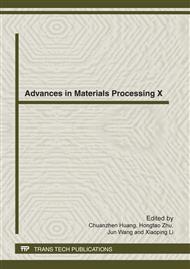p.519
p.525
p.531
p.537
p.544
p.550
p.556
p.563
p.569
Fluid Characteristics of Material Flow in High Speed Metal Cutting Process
Abstract:
In high speed metal cutting momentum would be large and the strain rate can be exceedingly high, the viscosity of material must take into account in studying the chip deformation. Model the high speed machining as fluid flow is much better than as solid. A laminar flow method is applied in this paper to analyze the velocity distribution, the pressure distribution, the temperature distribution and the strain rate distribution of high speed metal cutting. Analytical results showed that a speed stagnation point is located at some distance from the tool tip on the tool rake face, on which the maximum value of the pressure occurs, with zero speed; its location influences the life of the tool and the quality of the finished surface. The value of the pressure decrease along the rake face and reaches zero at some point away from the tool tip, which is the point of separation of the chip from the tool; The value of strain rate get a rapid increase from the tool tip to the free surface corner then decreased outwards.
Info:
Periodical:
Pages:
544-549
Citation:
Online since:
April 2012
Authors:
Price:
Сopyright:
© 2012 Trans Tech Publications Ltd. All Rights Reserved
Share:
Citation:


